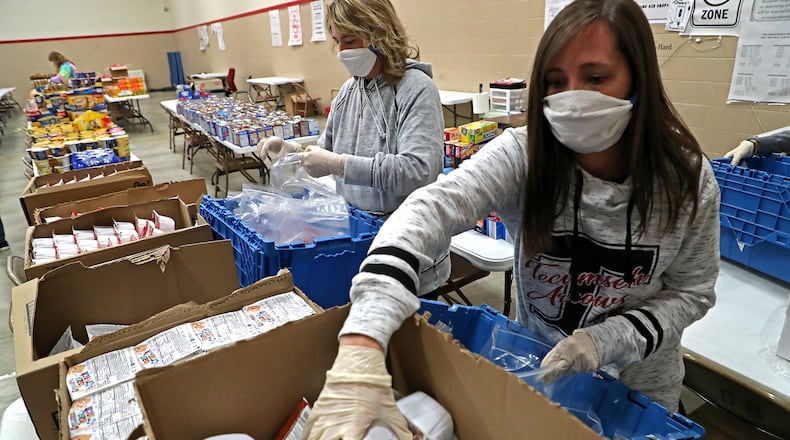However, if Ohioans want to speed up the process, following health orders and guidelines will help.
“Ohioans have been telling us that they want to get their lives back to normal, but they want to do it responsibly,” Vanderhoff said. “They have wanted a mile marker that our vaccinations are having enough of an impact that restrictions are no longer necessary.”
As of Tuesday, March 2, Ohio averaged 179.6 cases per 100,000, according to the state health department. Holmes County was the only under 50 cases, with 47.8. Shelby, Auglaize and Mercer counties aren’t far off with all three reporting fewer than 100 cases per 100,000 people over the last two weeks.
ODH determines the number of cases per 100,000 people by adding confirmed and probable cases with an onset date between a two-week period. That data is pulled from the Ohio Disease Reporting System.
The number of cases is divided by Ohio’s population (11,689,100) and then multiplied by 100,000.
DeWine and ODH selected 50 cases per 100,000 people as a mile marker after consulting with health experts and CDC guidelines.
According to Vanderhoff, the CDC defines moderate transmission of a disease as less than 50 cases per 100,000 people over a week. Ohio opted to go with two weeks instead of one to increase confidence that transmission is continuing to decrease over time.
“While we set this milepost we did it in the context of multiple other measures that are pointing in the right direction,” he said. “But we also did it in the context that people really want a straight-forward measure they can follow.”
The last time Ohio was under 50 cases per 100,000 people was back in June, between the state’s initial wave and summer spike, Vanderhoff said.
Even once the state reaches that threshold, ODH and the governor will still continue to offer guidance on preventing COVID’s transmission.
“This is a question of lifting mandatory requirements,” Vanderhoff explained.
When asked if the state was concerned that a reduce in testing could cause a false sense of security, Vanderhoff noted Ohio was still testing in large quantities as the state’s positivity rate has dropped. Instead, he thinks any decrease in testing is due to less people experiencing symptoms of the virus.
“No measure that we could pick would be perfect, but we have a lot of confidence in our testing program here in Ohio,” he said.
About the Author
